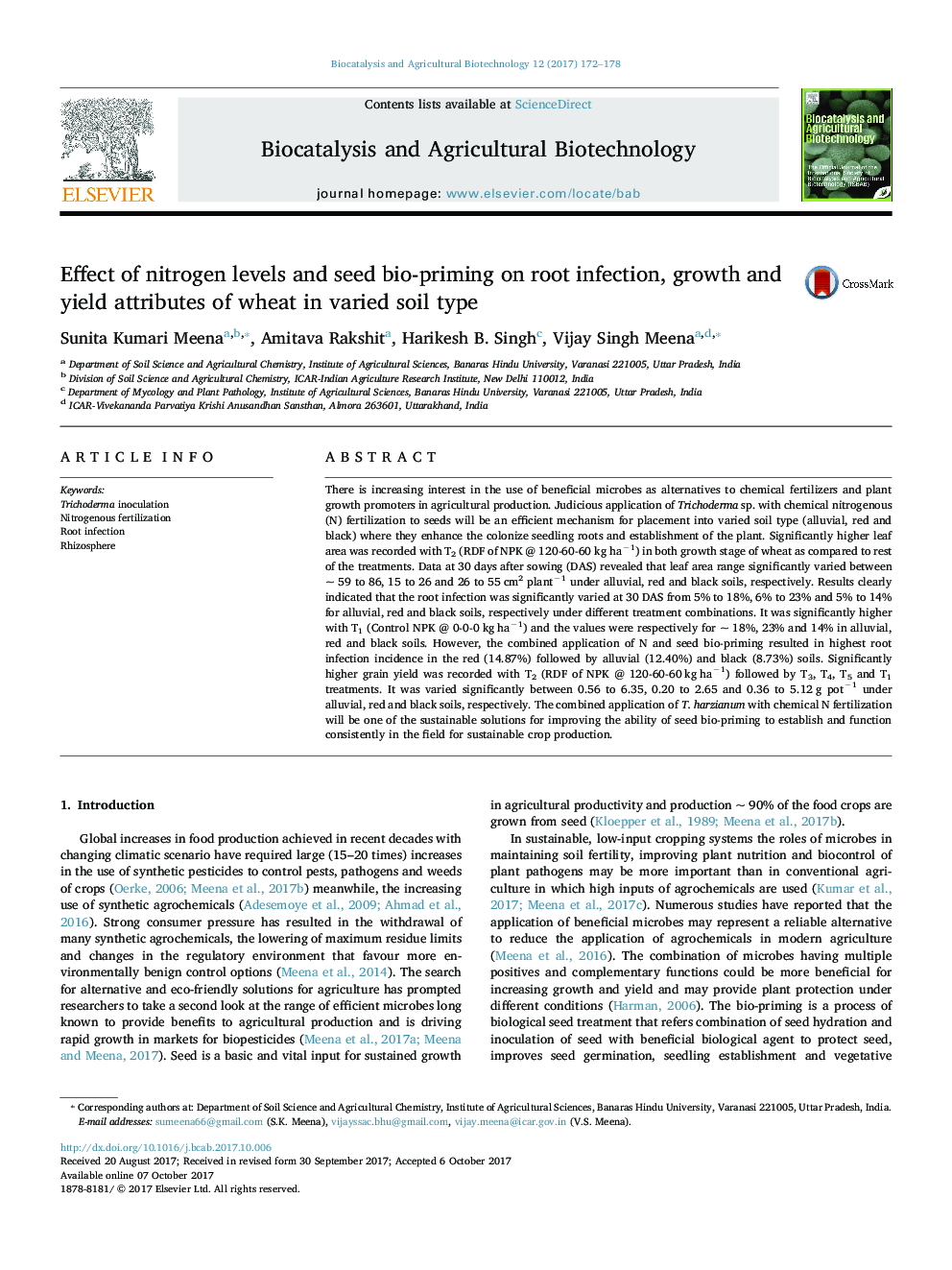| کد مقاله | کد نشریه | سال انتشار | مقاله انگلیسی | نسخه تمام متن |
|---|---|---|---|---|
| 5520430 | 1544900 | 2017 | 7 صفحه PDF | دانلود رایگان |
There is increasing interest in the use of beneficial microbes as alternatives to chemical fertilizers and plant growth promoters in agricultural production. Judicious application of Trichoderma sp. with chemical nitrogenous (N) fertilization to seeds will be an efficient mechanism for placement into varied soil type (alluvial, red and black) where they enhance the colonize seedling roots and establishment of the plant. Significantly higher leaf area was recorded with T2 (RDF of NPK @ 120-60-60 kg haâ1) in both growth stage of wheat as compared to rest of the treatments. Data at 30 days after sowing (DAS) revealed that leaf area range significantly varied between ~ 59 to 86, 15 to 26 and 26 to 55 cm2 plantâ1 under alluvial, red and black soils, respectively. Results clearly indicated that the root infection was significantly varied at 30 DAS from 5% to 18%, 6% to 23% and 5% to 14% for alluvial, red and black soils, respectively under different treatment combinations. It was significantly higher with T1 (Control NPK @ 0-0-0 kg haâ1) and the values were respectively for ~ 18%, 23% and 14% in alluvial, red and black soils. However, the combined application of N and seed bio-priming resulted in highest root infection incidence in the red (14.87%) followed by alluvial (12.40%) and black (8.73%) soils. Significantly higher grain yield was recorded with T2 (RDF of NPK @ 120-60-60 kg haâ1) followed by T3, T4, T5 and T1 treatments. It was varied significantly between 0.56 to 6.35, 0.20 to 2.65 and 0.36 to 5.12 g potâ1 under alluvial, red and black soils, respectively. The combined application of T. harzianum with chemical N fertilization will be one of the sustainable solutions for improving the ability of seed bio-priming to establish and function consistently in the field for sustainable crop production.
Journal: Biocatalysis and Agricultural Biotechnology - Volume 12, October 2017, Pages 172-178
